Country music, at its heart, is about storytelling, painting vivid pictures with melodies and lyrics that resonate deeply. It’s a genre that can evoke a wide range of emotions, from joy and nostalgia to heartbreak and rebellion, all with that unmistakable country twang. From the foundational sounds of Hank Williams to the contemporary country-pop crossovers, these songs trace the rich and evolving narrative of country music.
In 2014, Rolling Stone Country was launched, celebrating the genre with a list of the 100 Greatest Country Songs. Now, a decade later, to mark its 10th anniversary, this list has been expanded to 200, offering a more comprehensive exploration of country music’s vast history. This updated list provides a deeper dive into the genre’s diverse aspects, highlighting elements that might have been previously overlooked. This expanded list arrives at a pivotal moment, as genres blur and evolve, exemplified by a classic folk song reaching the top of the country charts and Beyoncé’s Cowboy Carter album spotlighting the significant contributions of Black artists like Linda Martell to country music. Almost a century after pioneers like the Carter Family, Jimmie Rodgers, and DeFord Bailey laid the groundwork, country music continues to grow and redefine itself.
Brad Paisley, ‘Welcome to the Future’
 Brad Paisley performs at Sleep Train Amphitheatre on September 26, 2009 in Wheatland, California. (Brad Paisley at Sleep Train Amphitheatre Wheatland CA 2009)
Brad Paisley performs at Sleep Train Amphitheatre on September 26, 2009 in Wheatland, California. (Brad Paisley at Sleep Train Amphitheatre Wheatland CA 2009)
Brad Paisley, often seen as mainstream country’s most outspoken liberal voice, delivers an ambitious, nearly six-minute track from his 2009 album American Saturday Night. “Welcome to the Future” is Paisley’s attempt to blend “multigenerational truth with a strong sense of hope and possibility.” In this optimistic vision of the “Future,” Paisley expresses wonder at technological advancements like car DVD players and mobile-phone video games. He contemplates how his grandfather, a WWII veteran, might react to trans-Pacific commerce and then shifts gears to acknowledge the racial progress he has witnessed during his lifetime—he even debuted the song live at the White House. True to Paisley’s signature style, the song is a dynamic mix, incorporating synth lines, steel guitar, fiddle breaks, and rapid guitar riffs, balancing thoughtful reflection with heartfelt sentiment. —R.G.
Stoney Edwards, ‘Hank and Lefty Raised My Country Soul’
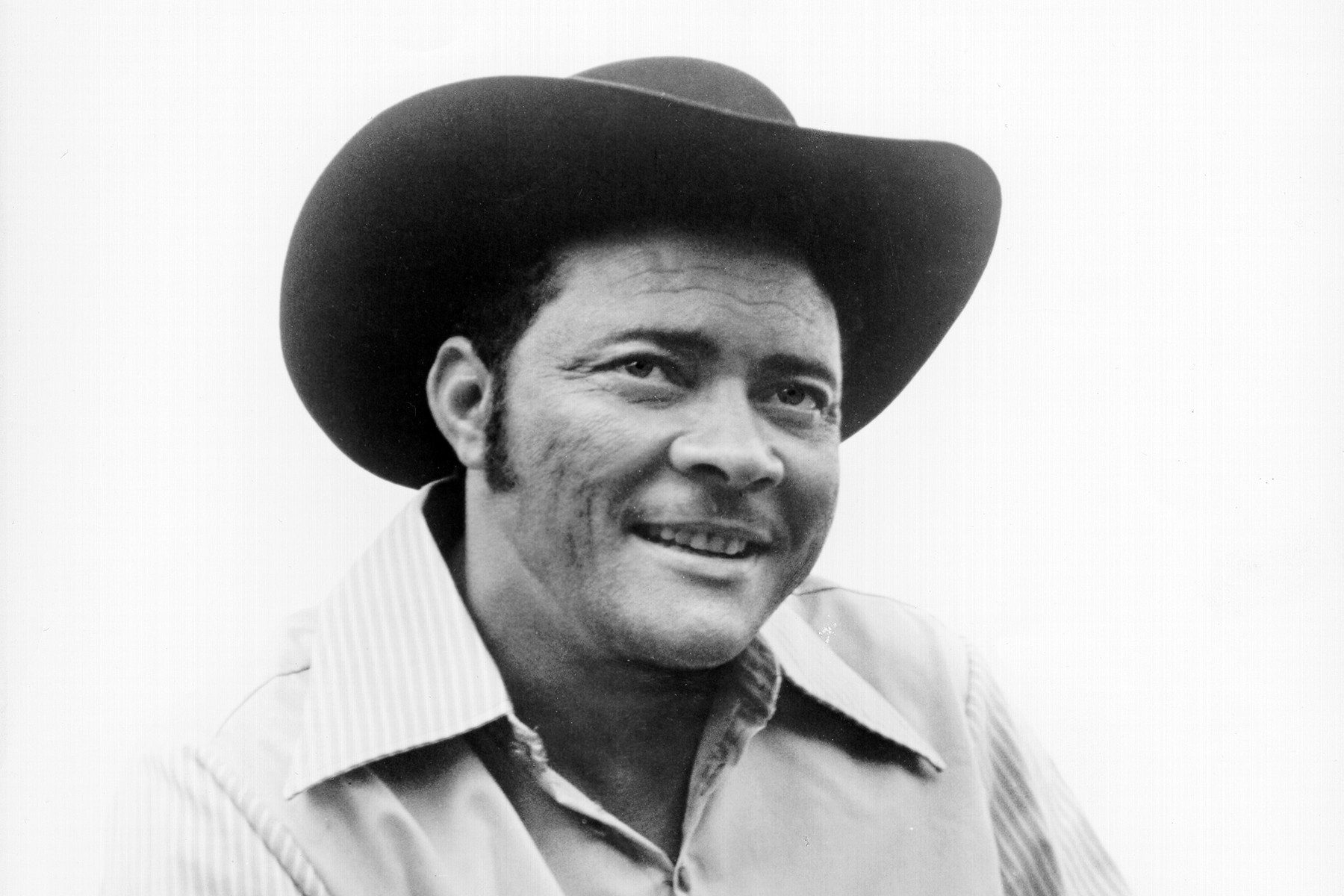 UNSPECIFIED – CIRCA 1970: Stoney Edwards portrait (Stoney Edwards circa 1970 portrait)
UNSPECIFIED – CIRCA 1970: Stoney Edwards portrait (Stoney Edwards circa 1970 portrait)
Stoney Edwards was among the pioneering Black artists who found success in country music after Charley Pride broke through the industry’s color barrier. Edwards’ “Hank and Lefty Raised My Country Soul,” is a tribute to his upbringing influenced by country music legends. This song poignantly highlights the extra effort Black artists often had to make to validate their country roots, a requirement not typically imposed on their white counterparts. Beyond its social context, it stands as a remarkable record. The arrangement cleverly merges elements of Hank Williams’ Drifting Cowboys and Lefty Frizzell’s Western Cherokees, but Edwards’s distinctive warm Oklahoma twang is uniquely his own. The narrative of the song, where Edwards embraces his father’s musical heroes rather than rebelling against them, perfectly embodies the spirit of country music tradition.—D.C.
Loretta Lynn and Conway Twitty, ‘You’re the Reason Our Kids Are Ugly’
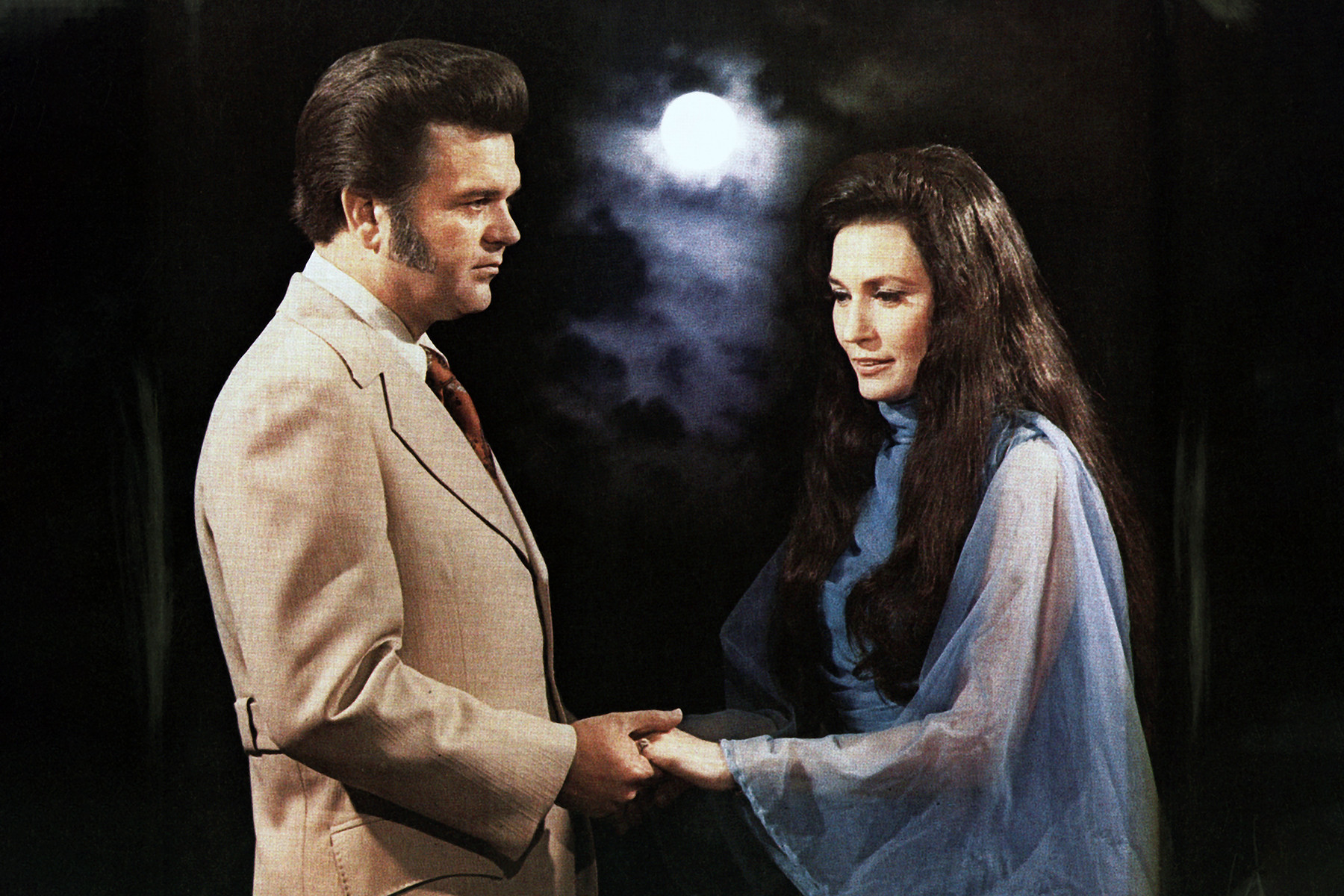 CIRCA 1979: Loretta Lynn and Conway Twitty portrait circa 1979 (Loretta Lynn and Conway Twitty 1979)
CIRCA 1979: Loretta Lynn and Conway Twitty portrait circa 1979 (Loretta Lynn and Conway Twitty 1979)
The 1970s were the golden age of country music power couples, from George Jones and Tammy Wynette to Johnny Cash and June Carter Cash. However, the most captivating duo wasn’t even romantically involved: Loretta Lynn and Conway Twitty. Their collaboration began with an impressive streak of five consecutive Number One hits early in the decade, and they remained consistent chart-toppers, culminating in their most unconventional and humorous song. “You’re the Reason Our Kids Are Ugly” is a playfully funky, comedic tune that never takes itself too seriously. Yet, Lynn and Twitty fully commit to the performance, playfully trading barbs about how the other has aged and supposedly tainted the family gene pool.—J. Gage
Gretchen Wilson, ‘Redneck Woman’
 LAS VEGAS – MAY 26: Gretchen Wilson performs in Las Vegas (Gretchen Wilson performs Las Vegas)
LAS VEGAS – MAY 26: Gretchen Wilson performs in Las Vegas (Gretchen Wilson performs Las Vegas)
Emerging from Nashville’s vibrant underground scene of outcasts known as the MuzikMafia, Gretchen Wilson, alongside Big & Rich, brought this collective into the mainstream spotlight. While Big & Rich had “Save a Horse (Ride a Cowboy),” Wilson’s “Redneck Woman” became a defining anthem. With its catchy, upbeat swing and unapologetic embrace of beer-drinking, Walmart-shopping, and redneck identity, “Redneck Woman” quickly climbed the country charts. Following a standout performance at the 2004 Country Radio Seminar, it became the fastest-rising Number One hit since Billy Ray Cyrus’s “Achy Breaky Heart.” Although Wilson herself didn’t replicate this level of success, the song undeniably paved the way for strong female artists like Miranda Lambert and Kimberly Perry.—N.M.
Gene Autry, ‘Back in the Saddle Again’
 LOS ANGELES – CIRCA 1940: Gene Autry with horse Champion 1940 (Gene Autry and Champion horse 1940)
LOS ANGELES – CIRCA 1940: Gene Autry with horse Champion 1940 (Gene Autry and Champion horse 1940)
According to Country Music U.S.A. by Bill C. Malone and Tracy W. Laird, Gene Autry “completed the ‘romantic westernizing’ begun by Roy Rogers.” Initially, Autry’s singing career largely involved performing songs made popular by Rogers. However, Autry possessed a unique charm that translated into both film success and record sales. By the time “Back in the Saddle Again” was created, Autry was already a well-established star. This song was a last-minute addition to the 1938 film Border G-Man, commissioned after songwriter Ray Whitley received a 5 a.m. request for a new song to be ready by 8 a.m. “Well, I’m back in the saddle again,” he remarked to his wife after the call. Her response, “Well, you’ve got a good title,” proved prophetic. Autry recorded the song multiple times—the first in 1939, becoming his second gold record—and it evolved into his signature theme song, even lending its name to his autobiography.—M.M.
Brandi Carlile, ‘The Joke’
 LOS ANGELES, CA – JULY 12: Brandi Carlile performs at The GRAMMY Museum 2018 (Brandi Carlile performs at GRAMMY Museum 2018)
LOS ANGELES, CA – JULY 12: Brandi Carlile performs at The GRAMMY Museum 2018 (Brandi Carlile performs at GRAMMY Museum 2018)
Brandi Carlile’s standout track, “The Joke,” is a powerful anthem featuring one of the most compelling vocal performances in 21st-century country music. It poignantly captures the voices of marginalized and minority groups who experienced heightened fear during the Trump era. Carlile’s soaring vocals, supported by the empathetic production of David Cobb and Shooter Jennings, embody the era’s pain, anger, and desperation. “The Joke” quickly became a show-stopping centerpiece of her performances, earning Carlile two well-deserved Grammy Awards. While it has all the hallmarks of a classic, its unique power is so intrinsically linked to Carlile’s delivery that it’s hard to imagine any other artist performing it with the same raw emotional impact.—J. Gage
Zach Bryan, ‘Something in the Orange’
 Zach Bryan portrait (Zach Bryan portrait)
Zach Bryan portrait (Zach Bryan portrait)
Zach Bryan took an unconventional path to country music stardom. Instead of the traditional Nashville route of bar gigs and industry networking, Bryan joined the Navy. He spent his off-duty hours in the barracks writing songs and sharing them on YouTube. He independently released two albums while still in active service. Following an honorable discharge and signing with a major label, Bryan released “Something in the Orange” as the lead single from his 2022 album, American Heartbreak. The song encapsulates Bryan’s distinctive appeal: simple instrumentation that highlights his poetic lyrics, delivered in a raw, urgent voice. Bryan proved in the 2020s that unpolished authenticity could fill arenas, establishing him as a major act across genres.—B.S.
The Oak Ridge Boys, ‘Elvira’
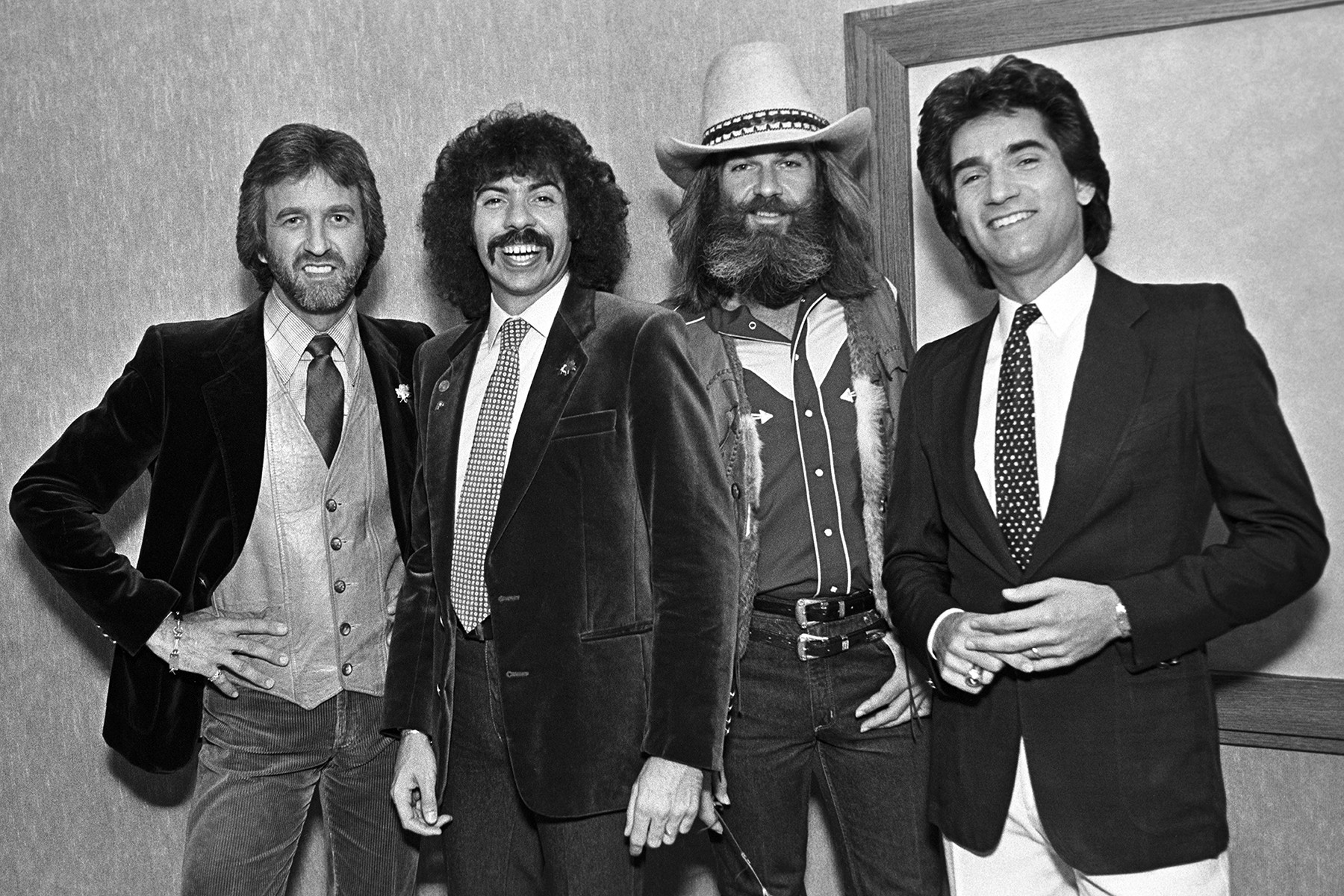 The Oak Ridge Boys backstage at Holiday Star 1981 (The Oak Ridge Boys backstage Holiday Star 1981)
The Oak Ridge Boys backstage at Holiday Star 1981 (The Oak Ridge Boys backstage Holiday Star 1981)
The Oak Ridge Boys began their journey in the 1940s in Knoxville, Tennessee, as the gospel-singing Oak Ridge Quintet. They maintained the classic vocal group tradition even as they transitioned to a more polished country sound in the 1970s and 1980s. The Oaks’ approachable style and adaptable musical approach made their crossover appeal seamless, including collaborations on tracks with artists like Paul Simon (“Slip Slidin’ Away”). Their biggest pop hit came with “Elvira,” characterized by its cheerful rhythm, horn section, and the infectious, sing-along bass hook “Giddy up, um-poppa-um-poppa, mow, mow,” delivered by Richard Sterban, the deep-voiced singer from Camden, New Jersey.—J.D.
Beyoncé, ‘Texas Hold ‘Em’
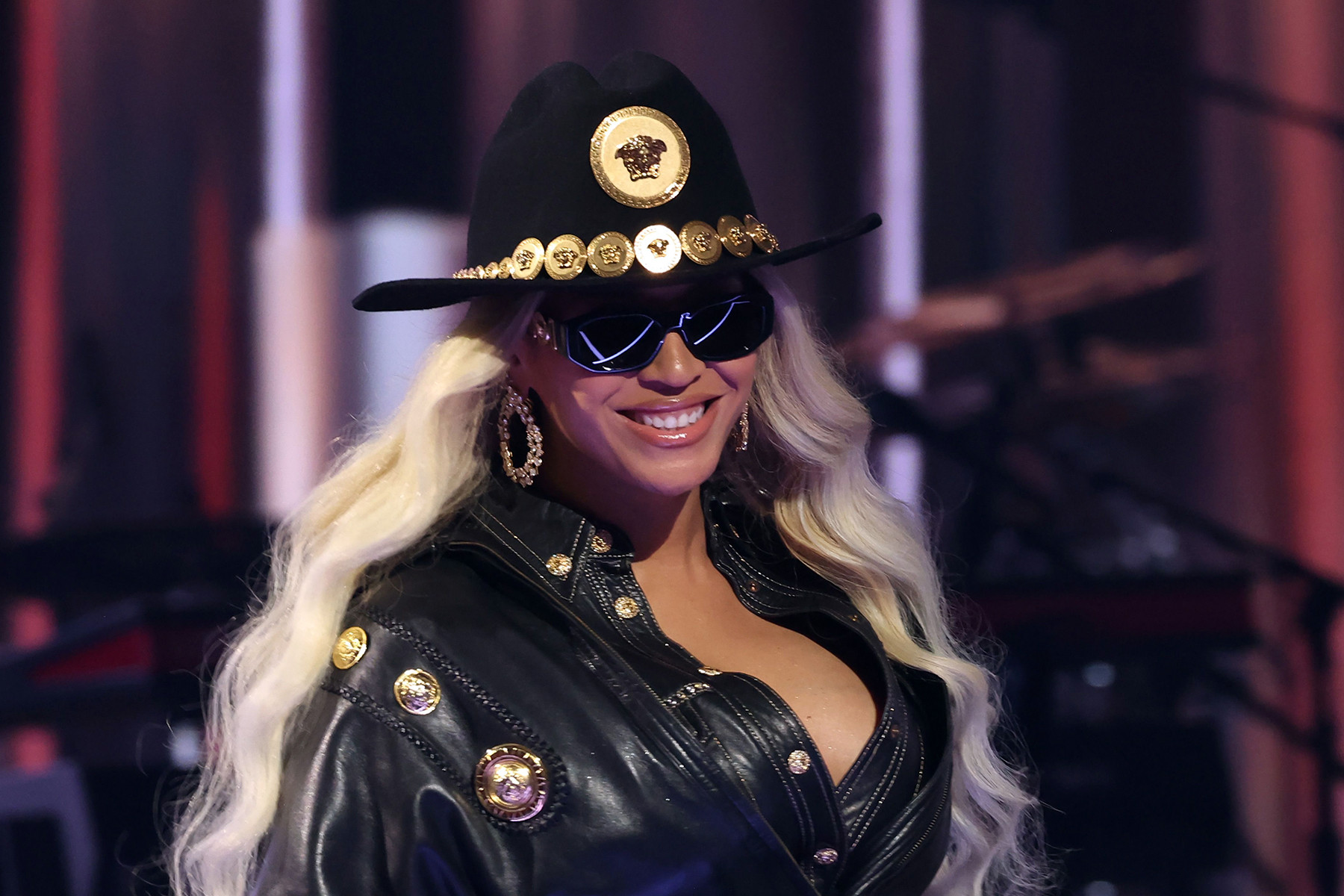 LOS ANGELES, CALIFORNIA – APRIL 01: Beyoncé at iHeartRadio Music Awards 2024 (Beyonce at iHeartRadio Music Awards 2024)
LOS ANGELES, CALIFORNIA – APRIL 01: Beyoncé at iHeartRadio Music Awards 2024 (Beyonce at iHeartRadio Music Awards 2024)
Released in February 2024, Beyoncé’s “Texas Hold ‘Em” quickly became a landmark. It marked the first time a song by a Black woman debuted at the top of the Billboard Hot Country Songs chart. Its long-term impact remains to be seen. Will it catalyze broader integration on country radio? Will it ignite a line-dance craze or face traditionalist backlash? Perhaps all of the above? Time will tell. What’s immediately clear is that from Rhiannon Giddens’ opening banjo riff to its raw Western beat and the fife-and-drum-inspired whistle breakdowns, this “real-life boogie and hoedown” is a quintessential 21st-century country anthem.—D.C.
Johnny Rodriguez, ‘Ridin’ My Thumb to Mexico’
 IN CONCERT – January 29, 1975: Johnny Rodriguez in concert 1975 (Johnny Rodriguez concert 1975)
IN CONCERT – January 29, 1975: Johnny Rodriguez in concert 1975 (Johnny Rodriguez concert 1975)
Johnny Rodriguez, the first country star of Mexican-American heritage, showcased the genre’s fluidity by recording songs in both English and Spanish. He observed, “You have stories in Mexican music, and country music said almost the same thing, just in different languages,” as noted in Ken Burns’ Country Music documentary. His 1973 single “Ridin’ My Thumb to Mexico” is a poignant narrative, a ballad of despair penned by Rodriguez himself, about escaping to another country when life becomes overwhelming. The sorrow in his voice contrasts with Jerry Kennedy’s lush production. It became his second Number One hit, one of several Rodriguez achieved in the Seventies.—J.F.
Ricky Skaggs, ‘Heartbroke’
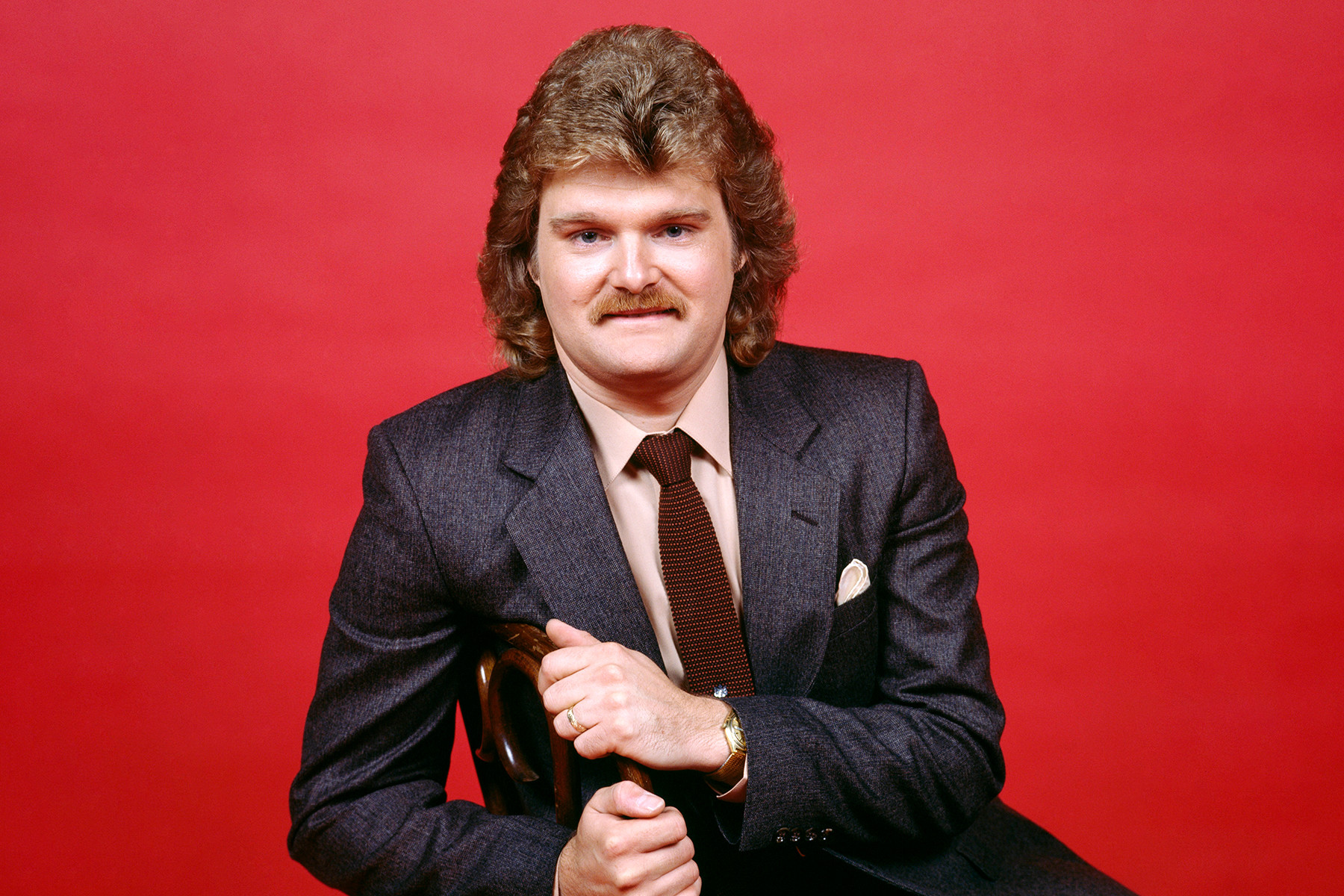 NASHVILLE – OCTOBER 11: Ricky Skaggs portrait CMA Awards 1982 (Ricky Skaggs portrait CMA Awards 1982)
NASHVILLE – OCTOBER 11: Ricky Skaggs portrait CMA Awards 1982 (Ricky Skaggs portrait CMA Awards 1982)
Songwriter Guy Clark envisioned his lively “Heartbroke” as akin to a Chuck Berry tune. When Ricky Skaggs recorded it for his influential 1982 bluegrass-country album, Highways & Heartaches, the future Country Music Hall of Famer admitted he initially didn’t grasp the song’s essence. Yet, he knew how to make it resonate. “Heartbroke,” the first of three singles from that album to top the country chart, also gained popularity with other artists, including a rising George Strait. However, it was Skaggs, a Kentucky native, who delivered the most spirited rendition, slightly modifying Clark’s line about pride being a burden when lonely, without diminishing the song’s infectious joy.—S.B.
Iris DeMent, ‘Let the Mystery Be’
 UNSPECIFIED – JANUARY 01: Iris DeMent portrait (Iris DeMent portrait)
UNSPECIFIED – JANUARY 01: Iris DeMent portrait (Iris DeMent portrait)
Born in Arkansas and raised in Los Angeles, Iris DeMent possesses a distinctive voice with a vibrato-rich twang, both delicate and robust. Her songwriting consistently displays heartfelt emotion and earthly spirituality. “Let the Mystery Be,” the opening track from her acclaimed 1993 debut, Infamous Angel, is a perfect example. It contemplates ideas of heaven, purgatory, and the afterlife, before concluding with a sensible acceptance of the unknown: “No one knows for certain and so it’s all the same to me/I think I’ll just let the mystery be.” This song launched an extraordinarily unconventional career that has spanned gospel standards, protest songs, and even an album inspired by Russian poet Anna Akhmatova (The Trackless Woods). “Let the Mystery Be” has become a standard in its own right, recently covered by Jeff Tweedy of Wilco on his Starship Casual Substack.—W.H.
Luke Combs, ‘Beer Never Broke My Heart’
 CLARKSTON, MICHIGAN – MAY 30: Luke Combs performs in Michigan (Luke Combs performs Michigan)
CLARKSTON, MICHIGAN – MAY 30: Luke Combs performs in Michigan (Luke Combs performs Michigan)
Luke Combs has evolved into country music’s leading family-oriented artist in the 2020s, with deeply touching songs about his wife and children. Yet, he still knows how to write an exceptional drinking song. “Beer Never Broke My Heart,” released in 2019, is a standout addition to country’s collection of drinking anthems, thanks to Combs’s witty, relatable lyrics and his gravelly delivery. The way he emphasizes each phrase of the chorus with a dramatic pause — “Long neck! Ice cold! Beer never broke my heart!” — has an irresistible sing-along quality. His soulful approach to the bridge (“It takes one hand to count the things I can count on”) demonstrates his ability to infuse genuine emotion into every line he sings.—J.H.
Turnpike Troubadours, ‘The Bird Hunters’
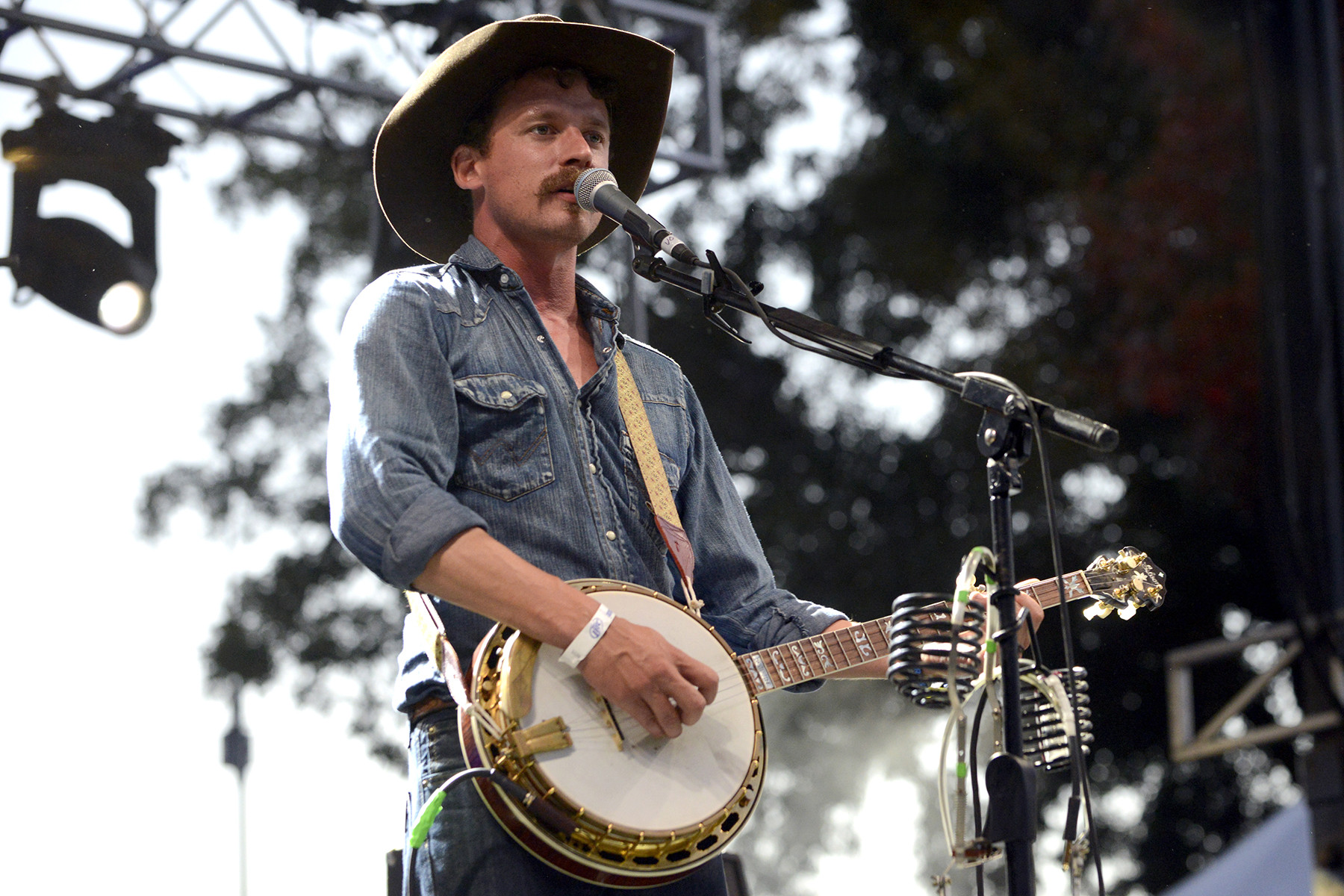 AUSTIN, TX – OCTOBER 05: Evan Felker Turnpike Troubadours Austin City Limits 2014 (Evan Felker Turnpike Troubadours Austin City Limits 2014)
AUSTIN, TX – OCTOBER 05: Evan Felker Turnpike Troubadours Austin City Limits 2014 (Evan Felker Turnpike Troubadours Austin City Limits 2014)
Turnpike Troubadours are at the forefront of the Red Dirt country revival, an Oklahoma sound with roots in the mid-20th century. “The Bird Hunters,” a prime example of this tradition, is about returning home to East Oklahoma. It perfectly blends traditional storytelling with classic instrumentation, infused with a modern Southern rock vibe. However, it’s Evan Felker’s narrative that gives the song its emotional depth—a story of a man reassessing his life after a move to Tulsa doesn’t work out, and the friend and dog that help him reconnect with his identity. It’s a familiar story, but the Troubadours tell it with a level of detail and heart that few bands can match.—B.S.
Johnny Lee, ‘Lookin’ for Love’
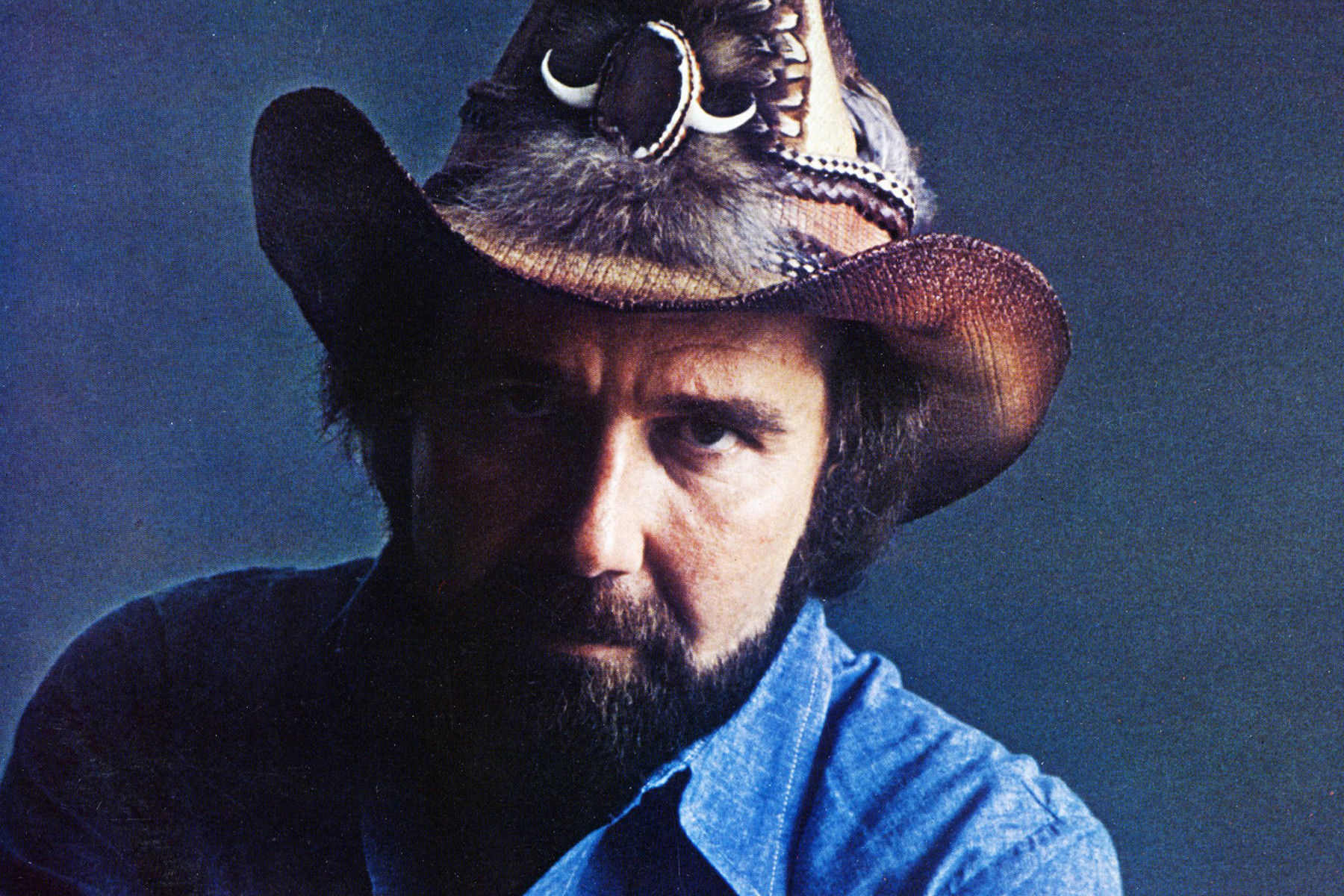 UNSPECIFIED – JANUARY 01: Johnny Lee portrait (Johnny Lee portrait)
UNSPECIFIED – JANUARY 01: Johnny Lee portrait (Johnny Lee portrait)
One evening in the late 1970s, Eagles manager Irving Azoff approached Johnny Lee, the frontman for the house band at Gilley’s, a Houston bar, and asked if he would be interested in singing in a movie Azoff was involved with as a music coordinator. Lee, accustomed to empty promises, responded casually, “Yeah, sure, just as soon as I finish this watermelon. You bet.” This nonchalant acceptance led to a significant opportunity. Urban Cowboy, starring John Travolta and Debra Winger, became a box office sensation, and so did its soundtrack, featuring Lee’s mellow, singles-bar anthem, “Lookin’ for Love.” Gilley and another music coordinator discovered the song in a stack of demos. Lee admitted, “I couldn’t believe I hadn’t written it myself, it was the story of my life up till then.”—M.M.
Keith Urban, ‘You’ll Think of Me’
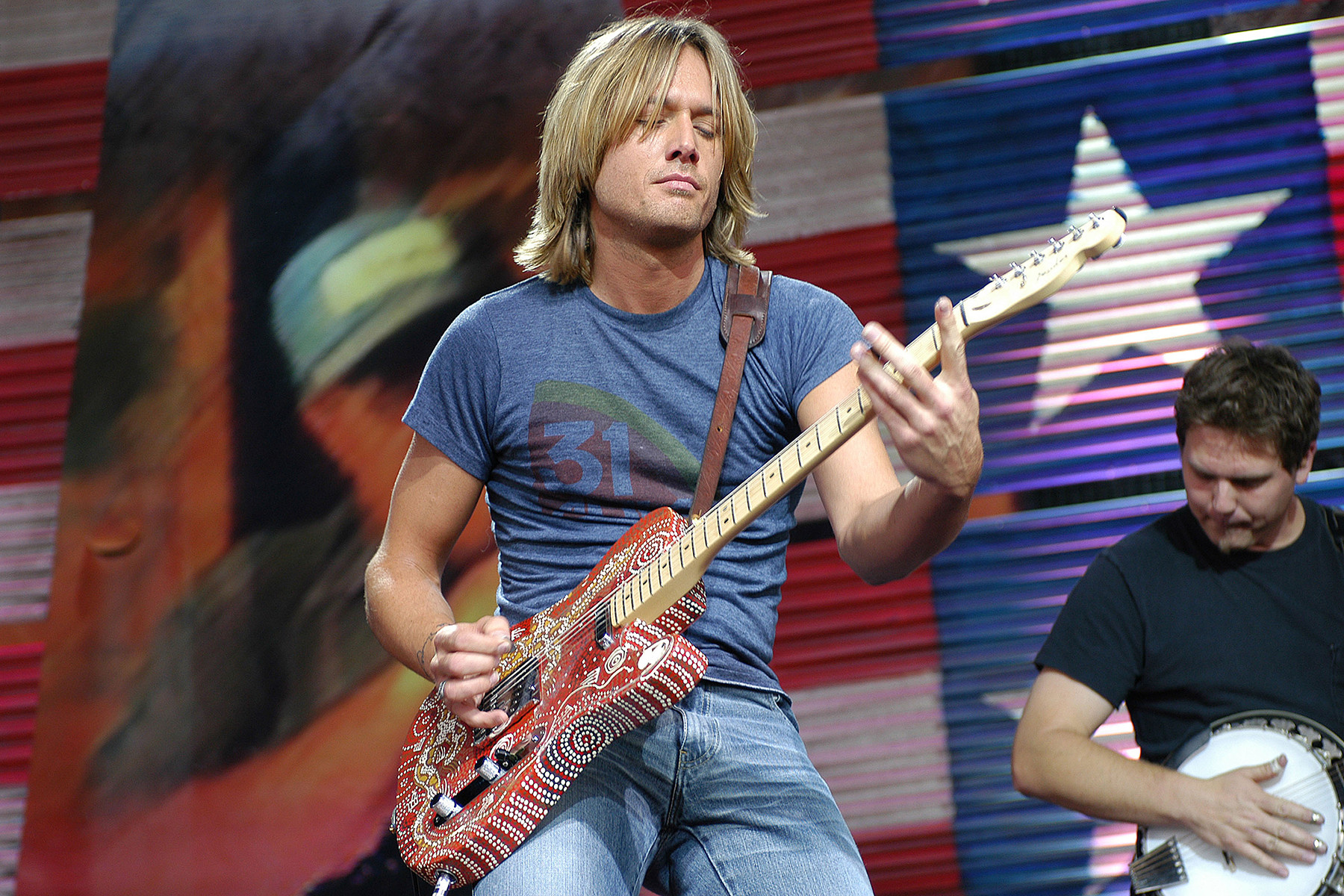 Keith Urban Farm Aid Pittsburgh 2002 (Keith Urban Farm Aid Pittsburgh 2002)
Keith Urban Farm Aid Pittsburgh 2002 (Keith Urban Farm Aid Pittsburgh 2002)
Keith Urban’s 2002 album, Golden Road, solidified his position as a remarkably talented superstar with broad crossover appeal. On the last and arguably finest of the album’s four singles, the Australian guitar virtuoso traded his electric guitar for an acoustic to deliver an exquisitely poignant breakup ballad. “Take your records, take your freedom/take your memories, I don’t need ‘em,” he sings, attempting to move on, yet Urban’s sorrowful tone reveals his underlying pain. Released as a single in 2004, the song reached Number One on the country charts and crossed over to adult contemporary and adult top 40 radio, ultimately earning Urban his first Grammy Award.—J.F.
Old Crow Medicine Show, ‘Wagon Wheel’
 Old Crow Medicine Show Hardly Strictly Bluegrass Festival 2003 (Old Crow Medicine Show Hardly Strictly Bluegrass Festival 2003)
Old Crow Medicine Show Hardly Strictly Bluegrass Festival 2003 (Old Crow Medicine Show Hardly Strictly Bluegrass Festival 2003)
Old Crow Medicine Show’s “Wagon Wheel” had a long journey to becoming a hit. It existed for over 30 years before the band recorded it and another decade before it became widely popular. The song originated as an unfinished Bob Dylan track from the 1973 Pat Garrett and Billy the Kid soundtrack sessions. Old Crow Medicine Show recorded a fiddle-driven version in 2004, adding their own lyrics to Dylan’s mumbled vocal fragments. Nine years later, Darius Rucker’s warm rendition of the tune reached Number One on the Billboard Hot Country Songs chart. “We’ve never met Dylan,” noted Old Crow’s Critter Fuqua, “but the song is technically co-written by Bob Dylan.”—J.D.
DeFord Bailey, ‘Pan-American Blues’
 UNITED STATES – JANUARY 01: DeFord Bailey portrait (DeFord Bailey portrait)
UNITED STATES – JANUARY 01: DeFord Bailey portrait (DeFord Bailey portrait)
DeFord Bailey, known as the “harmonica wizard,” was a frequent performer on country radio’s influential WSM Barn Dance. Confined to bed with polio in his youth, Bailey absorbed the sounds of his native Tennessee—trains, hounds, fox hunters, hens—and recreated them on his harmonica. “Pan-American Blues,” named after the train route between New Orleans and Cincinnati, is a three-minute piece of sonic artistry, evocative of early cinema. As one of country music’s first Black stars, Bailey was also a prominent figure in the early days of The Grand Ole Opry.—C.W.
Dierks Bentley, ‘I Hold On’
 LAS VEGAS, NV – APRIL 08: Dierks Bentley performs Tim McGraw event Las Vegas (Dierks Bentley performs Las Vegas)
LAS VEGAS, NV – APRIL 08: Dierks Bentley performs Tim McGraw event Las Vegas (Dierks Bentley performs Las Vegas)
In the mid-1990s, Dierks Bentley and his father drove an aging Chevrolet pickup from Arizona to Nashville. In 2012, after Bentley had achieved stardom, his father passed away. While this context isn’t essential to appreciate his 2013 single “I Hold On,” it adds depth to the song about his attachment to that old pickup. The song appeared on Bentley’s seventh album, Riser, a significant release considered one of his best. Although Bentley’s rise to fame might not have been as meteoric as some of his stadium-filling contemporaries, songs like “I Hold On” suggest his lasting presence in country music.—J.F.
Sons of the Pioneers, ‘Tumbling Tumbleweeds’
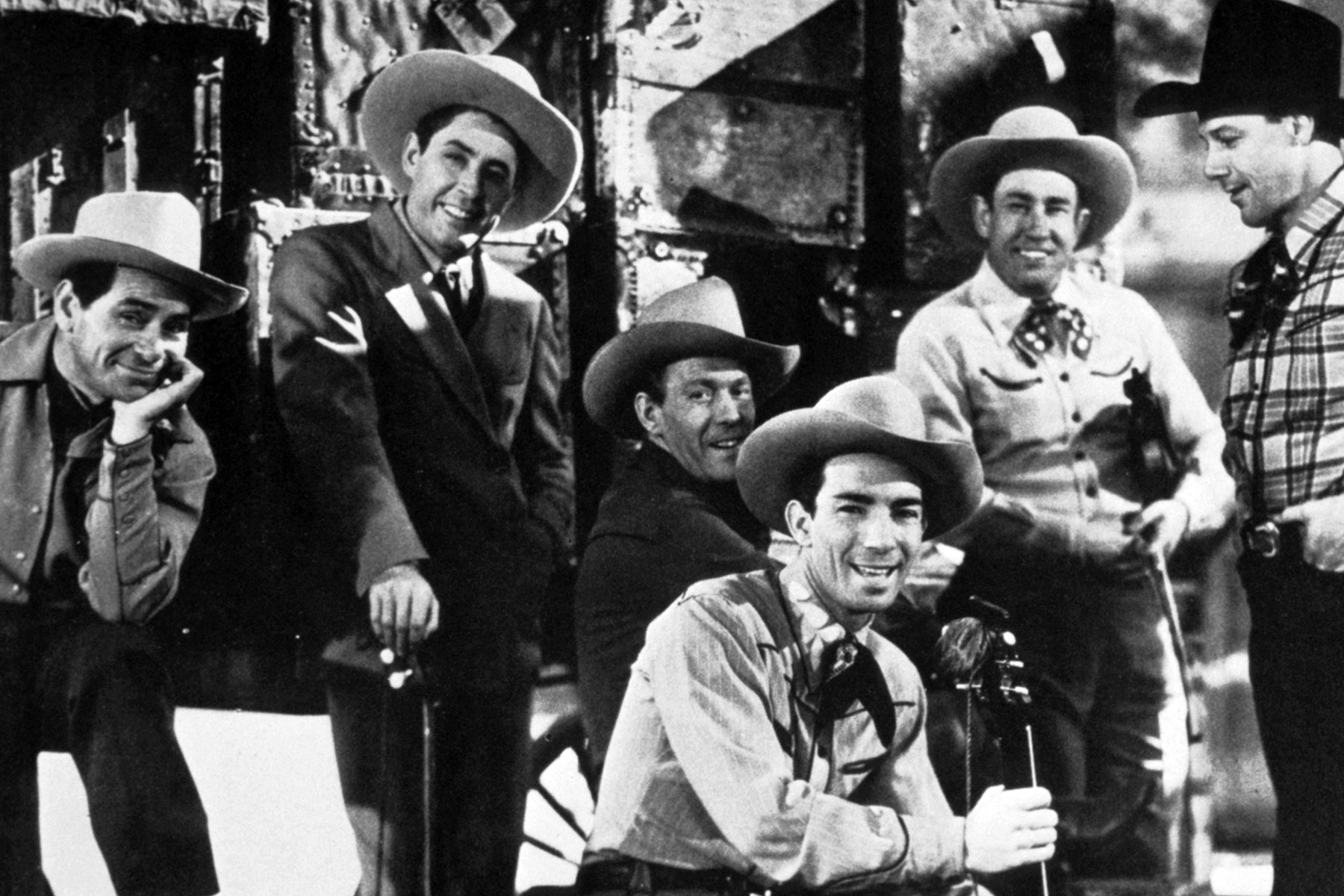 UNITED STATES – JANUARY 01: Sons of Pioneers portrait (Sons of Pioneers portrait)
UNITED STATES – JANUARY 01: Sons of Pioneers portrait (Sons of Pioneers portrait)
Early recordings by Sons of the Pioneers, led by Roy Rogers before he became the “King of the Cowboys,” had an ethereal quality, largely due to the vocal interplay between Rogers, Bob Nolan, and Tim Spencer. “Tumbling Tumbleweeds,” recorded during the Sons’ first session, evokes vast landscapes with its sweeping harmonies and prominent violin. Despite its optimistic tone about wandering, the lyrics are surprisingly reflective of its time—the song about the joys of vagrancy became popular during the Great Depression. It also possesses a subtle humor, as the tumbleweeds are described as “pledging their love to the ground” as they roll.—M.M.
Mary Gauthier, ‘Mercy Now’
 Mary Gauthier Sundance Film Festival 2005 (Mary Gauthier Sundance Film Festival 2005)
Mary Gauthier Sundance Film Festival 2005 (Mary Gauthier Sundance Film Festival 2005)
Mary Gauthier’s signature song, “Mercy Now,” paints a Southern Gothic panorama, evolving from personal grief to universal compassion and back. It’s an existential plea for “mercy now” for her dying father, a struggling nation, a fragile planet, and ultimately, for ourselves. She began writing it after visiting her father, hospitalized with Alzheimer’s-like symptoms after a car accident. Inspired by the repetitive lines of Lucinda Williams’ 1988 song “Changed the Locks” and the post-9/11 American landscape, she chose to “back the camera up,” in her words. Years later, Rolling Stone recognized “Mercy Now” as one of the 40 Saddest Country Songs of All Time. “I’m honored,” Gauthier said, “but ‘Mercy Now’ is not sad, it’s real.”—C.W.
Vern Gosdin, ‘Chiseled in Stone’
 Vern Gosdin Chicago 1998 (Vern Gosdin Chicago 1998)
Vern Gosdin Chicago 1998 (Vern Gosdin Chicago 1998)
Tammy Wynette once hailed Vern Gosdin as “the only other singer who can hold a candle to George Jones.” His most impactful hit single, “Chiseled in Stone,” which won the 1989 CMA Song of the Year, certainly supports this claim. Co-written with Max D. Barnes, it’s a quintessential barroom ballad where casual conversation evolves into profound reflection and then into deep heartache. Gosdin’s exceptional talent lay in his ability to convey each emotional stage with equal weight, never succumbing to sentimentality, even as he acknowledges that he is in conversation with someone whose life experiences dwarf his own in terms of suffering.—S.B.
Tyler Childers, ‘Long Violent History’
 LONDON, ENGLAND – JANUARY 21: Tyler Childers performs London 2020 (Tyler Childers performs London 2020)
LONDON, ENGLAND – JANUARY 21: Tyler Childers performs London 2020 (Tyler Childers performs London 2020)
The 2020 police killing of George Floyd resonated across America, even within the often conservative country music community. Tyler Childers responded with exceptional power to the issue of racism in America with the title track of his third album. This primarily instrumental record of public domain fiddle tunes culminates in a potent message. The album’s closer, “Long Violent History,” is the only track with lyrics, and Childers doesn’t hold back. Speaking from the perspective of “a white boy from Hickman,” he urges listeners to consider the anxiety of “just constantly worryin’/Kickin’ and fightin’, beggin’ to breathe.” Childers released the song with a video message expressing his desire for “justice for Breonna Taylor, a Kentuckian,” like himself, among other heartfelt statements.—B.M.
Pam Tillis, ‘Maybe It Was Memphis’
 Pam Tillis Nashville 1993 (Pam Tillis Nashville 1993)
Pam Tillis Nashville 1993 (Pam Tillis Nashville 1993)
Pam Tillis emerged as one of the brightest stars of the 1990s country boom, known for her unique blend of twang, sass, and soul—a musical heritage inherited from her father, Nashville legend Mel Tillis. After a period exploring New Wave pop in the 1980s, she achieved country stardom with her 1991 signature song “Maybe It Was Memphis.” This sultry ballad recounts a summer romance with a young man reminiscent of a Faulkner character. Her catalog of hits includes “Put Yourself in My Place,” “Spilled Perfume,” “Mi Vida Loca (My Crazy Life),” and the whimsical “Cleopatra, Queen of Denial.”—R.S.
Kathy Mattea, ‘Eighteen Wheels and a Dozen Roses’
 Kathy Mattea Indianapolis 1990 (Kathy Mattea Indianapolis 1990)
Kathy Mattea Indianapolis 1990 (Kathy Mattea Indianapolis 1990)
Historically, country music has often been seen as music for adults. Kathy Mattea, with her warm vocals, helped maintain folk-pop country’s presence on radio between Anne Murray and Mary Chapin Carpenter. She achieved her biggest hit with “Eighteen Wheels and a Dozen Roses.” The song tells the story of Charlie, a retiring trucker heading home to his wife, planning to exchange his rig for an RV and leisure. “With pieces of the old dream, they’re gonna light the old flame,” Mattea sings with empathy and without condescension. “Doin’ what they please.” The song celebrates the beginning of life in retirement.—D.C.
Billy Strings, ‘Dust in a Baggie’
 Billy Strings portrait (Billy Strings portrait)
Billy Strings portrait (Billy Strings portrait)
While many self-proclaimed outlaw country artists have questionable outlaw credentials, bluegrass virtuoso Billy Strings brings genuine, law-breaking authenticity to “Dust in a Baggie.” This track narrates a tale of methamphetamine addiction, loosely inspired by a family friend. Alongside furious guitar picking, the compelling rave-up features a memorable chorus: “I used my only phone call to contact my Daddy/I got 20 long years for some dust in a baggie.” Fortunately, Strings himself avoided incarceration, finding sobriety in California.—B.M.
Darius Rucker, ‘Don’t Think I Don’t Think About It’
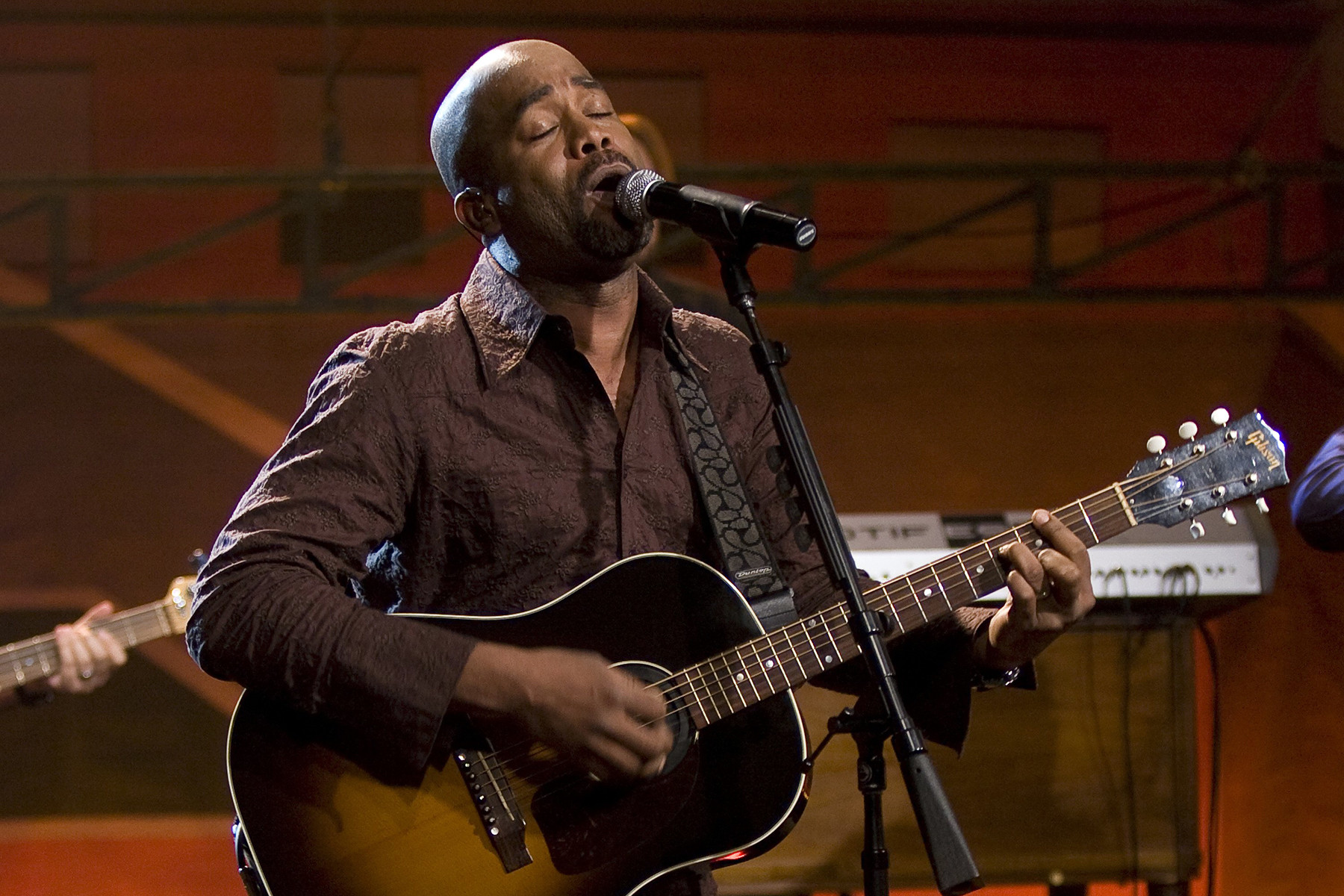 THE TONIGHT SHOW WITH JAY LENO – Darius Rucker 2008 (Darius Rucker Tonight Show Jay Leno 2008)
THE TONIGHT SHOW WITH JAY LENO – Darius Rucker 2008 (Darius Rucker Tonight Show Jay Leno 2008)
Darius Rucker’s success as a country artist was not guaranteed, despite Hootie & the Blowfish’s broad influence with their melodic folk-rock. However, his 2008 solo debut was undeniably successful—a mature country anthem exploring the universal experience of pondering “what if” scenarios years after a breakup. “Don’t Think I Don’t Think About It” topped the country chart, making Rucker the first Black artist to reach Number One since Ray Charles’s duet with Willie Nelson on “Seven Spanish Angels” in 1985.—J.F.
Jimmie Davis, ‘You Are My Sunshine’
 Mississippi Rhythm, US lobbycard, Jimmie Davis, Veda Ann Borg, 1949 (Jimmie Davis Mississippi Rhythm 1949)
Mississippi Rhythm, US lobbycard, Jimmie Davis, Veda Ann Borg, 1949 (Jimmie Davis Mississippi Rhythm 1949)
George Jones considered “You Are My Sunshine” the most perfect song ever written. Alongside “Happy Birthday to You” and “White Christmas,” it ranks among the most recognized songs globally. While numerous versions exist, Jimmie Davis’s original 1940 recording remains the most beloved. Despite its title, “Sunshine,” the song’s authorship is debated, and its lyrics are deeply melancholic. Davis himself was a complex figure; he led one of country music’s first racially integrated bands but later advocated segregation as a two-term governor of Louisiana. Nevertheless, “You Are My Sunshine” has transcended racial boundaries, with hit versions by artists from Bing Crosby to Aretha Franklin.—S.B.
Jo Dee Messina, ‘Heads Carolina, Tails California’
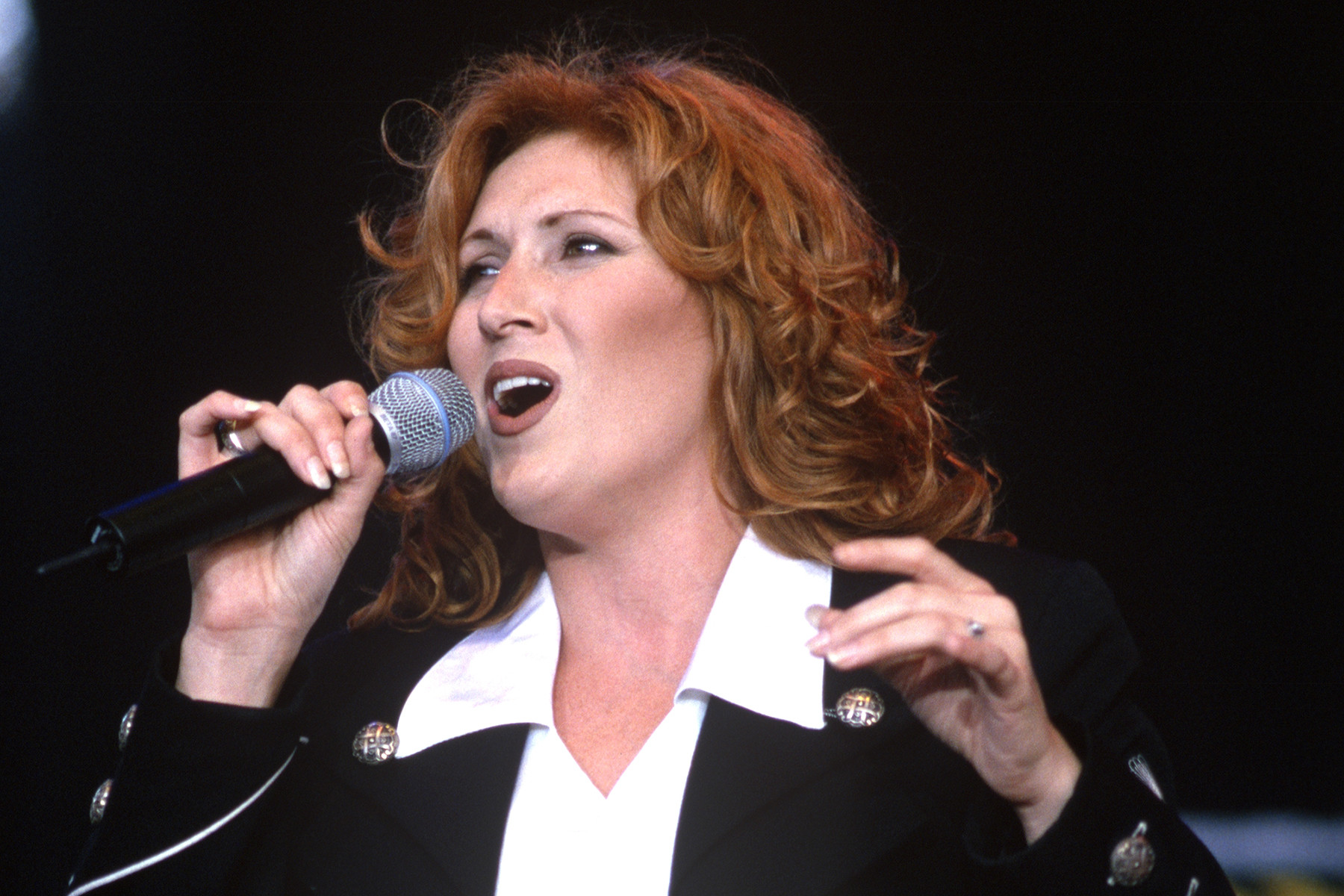 Jo Dee Messina Shoreline Amphitheatre 1997 (Jo Dee Messina Shoreline Amphitheatre 1997)
Jo Dee Messina Shoreline Amphitheatre 1997 (Jo Dee Messina Shoreline Amphitheatre 1997)
“Can we change ‘Austin’ to ‘Boston’?” Jo Dee Messina asked songwriters Tim Nichols and Mark Sanders before recording “Heads Carolina, Tails California” for her debut album. “’Cause I really do have people in Boston!” Born in Framingham, Massachusetts, Messina spent her early Nashville years bartending and entering talent shows. “Heads Carolina, Tails California” propelled her to stardom. Its lyrics marked a shift in country music’s geography. Earlier in the 20th century, California and the Carolinas were country music hubs. For Messina, and many listeners discovering country in the Nineties, they represented destinations, sun-soaked promised lands of country music.—N.M.
Linda Ronstadt, ‘Long Long Time’
 UNSPECIFIED – CIRCA 1970: Linda Ronstadt portrait (Linda Ronstadt portrait 1970)
UNSPECIFIED – CIRCA 1970: Linda Ronstadt portrait (Linda Ronstadt portrait 1970)
“I hate that album,” Linda Ronstadt confessed to Rolling Stone regarding her 1970 country LP Silk Purse. “I couldn’t sing then; I didn’t know what I was doing.” However, she made an exception for “Long Long Time.” Written by Gary White, this heartbreaking ballad of unrequited love showcases her phenomenal vocal range. Listeners had previously been charmed by her cover of Michael Nesmith’s “Different Drum” with the Stone Poneys, but “Long Long Time” became her true introduction as a vocal powerhouse. It was her first solo single to chart, and it garnered Ronstadt her first Grammy nomination. In 2023, over fifty years post-release, its appearance on HBO’s The Last of Us reintroduced the song to a new audience.—A.M.
Sugarland, ‘Baby Girl’
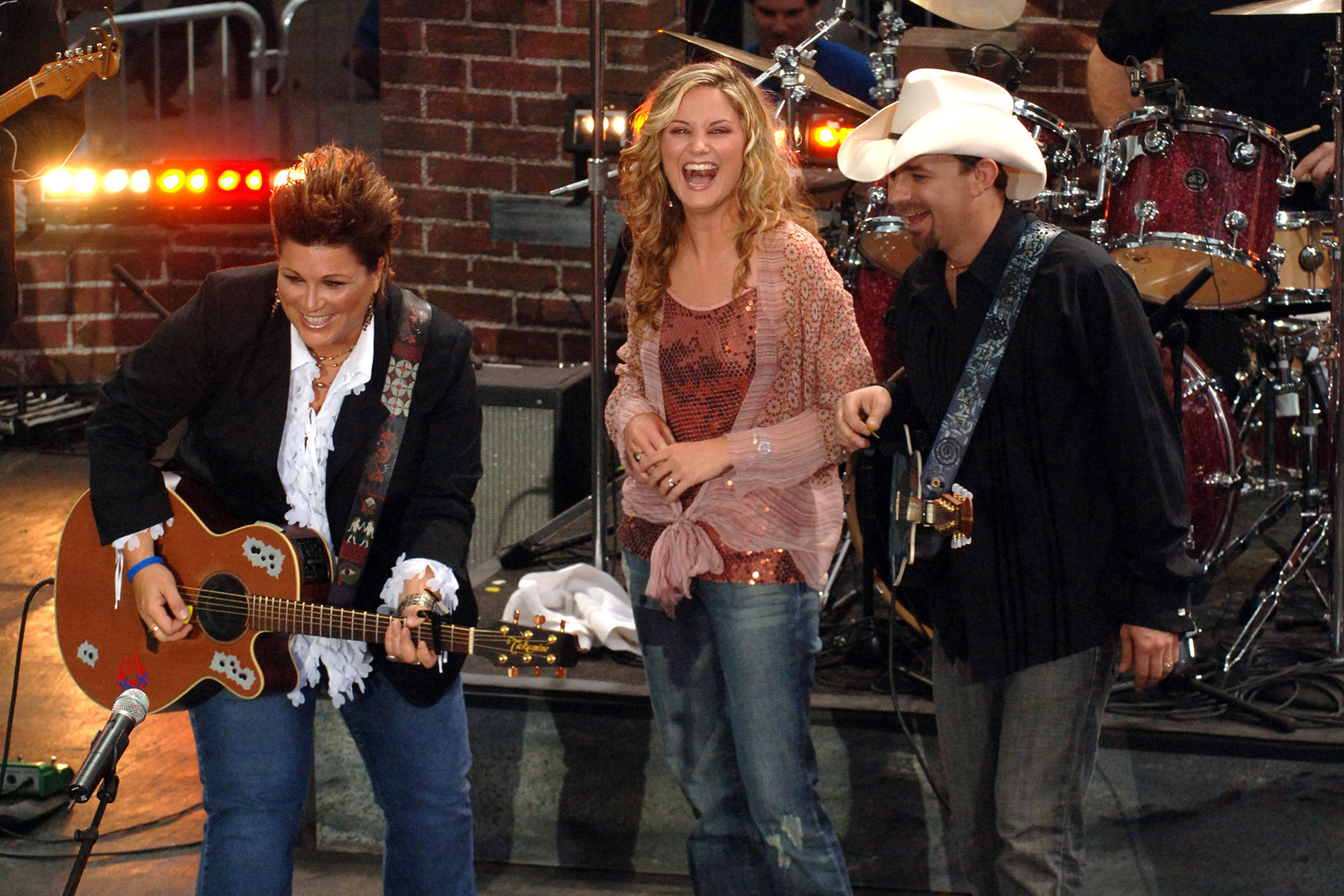 Sugarland CMT Music Awards Pre-Party 2005 (Sugarland CMT Music Awards Pre-Party 2005)
Sugarland CMT Music Awards Pre-Party 2005 (Sugarland CMT Music Awards Pre-Party 2005)
Country music cherishes stories of underdogs succeeding against the odds. Sugarland’s 2004 debut, “Baby Girl,” is a story about breaking into the country music scene itself. With its bright melody and crisp harmonies, the chorus resembles a letter home asking for financial support, but Jennifer Nettles, Kristian Bush, Kristen Hall, and co-writer Troy Bieser also incorporated pointed critiques of the music industry within the verses. “Big town full of little white lies/Everybody’s your friend, you can never be sure,” Nettles sang. “Baby Girl” became a strong introduction for the multifaceted star Nettles and foreshadowed a path in country music followed by artists like Carrie Underwood, Kelsea Ballerini, and Taylor Swift.—J.F.
Luke Bryan, ‘Drink a Beer’
 LAS VEGAS, NV – APRIL 07: Luke Bryan ACM Awards 2013 (Luke Bryan ACM Awards 2013)
LAS VEGAS, NV – APRIL 07: Luke Bryan ACM Awards 2013 (Luke Bryan ACM Awards 2013)
Initially appearing to be another party anthem from the former king of spring break, “Drink a Beer” profoundly affects listeners with its narrative of honoring someone lost too soon. Bryan delivers the song with palpable tragic experience—having lost both his brother and sister young—and his enduring grief is the emotional core of the song, penned by Chris Stapleton and Jim Beavers. Bryan’s performance of “Drink a Beer” at the 2013 CMA Awards (with a then-underground Stapleton backing him) was deeply moving. However, the studio version remains Bryan’s peak, a rare and authentic expression of sorrow from one of country’s most upbeat artists.—J.H.
Brenda Lee, ‘I’m Sorry’
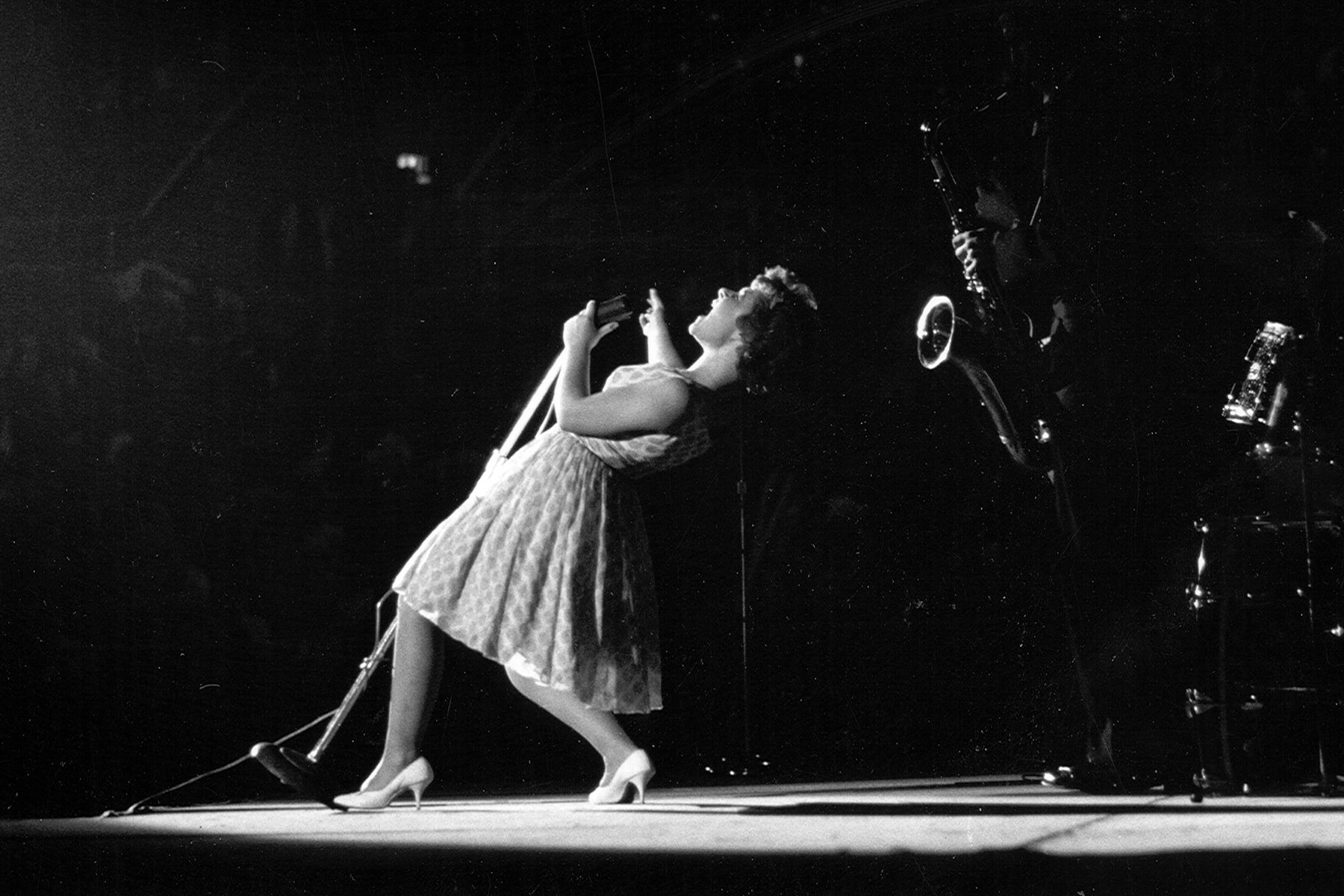 NOVEMBER 1960: Brenda Lee concert 1960 (Brenda Lee concert 1960)
NOVEMBER 1960: Brenda Lee concert 1960 (Brenda Lee concert 1960)
Brenda Lee, the first woman inducted into both the country and rock and roll halls of fame, was only 15 when she recorded “I’m Sorry” with producer Owen Bradley, the Anita Kerr Singers, and studio musicians known as the A-Team. A pop Number One that surprisingly never charted on the country countdown, “I’m Sorry” is both an exemplar of the Nashville sound and a reminder of the artificiality of genre boundaries. The recording is multifaceted. How did Lee convey such profound emotional contrition at such a young age? She repeatedly apologizes, begging for forgiveness. What was her transgression? Will she ever forgive herself?—D.C.
Margo Price, ‘Hurtin’ (on the Bottle)’
 AUSTIN, TX – MARCH 16: Margo Price SXSW Music Festival 2016 (Margo Price SXSW Music Festival 2016)
AUSTIN, TX – MARCH 16: Margo Price SXSW Music Festival 2016 (Margo Price SXSW Music Festival 2016)
The formula for a great country song might just be: friends, a porch, and a bottle of Bulleit Rye. Margo Price co-wrote “Hurtin’ (on the Bottle)” one evening with her husband, Jeremy Ivey, Caitlin Rose, and Mark Fredson, releasing it on her 2016 debut, Midwest Farmer’s Daughter. It remains her most popular song because of its swinging rhythm and relatable themes of whiskey and heartbreak. Although Price has since become sober, she still enjoys performing “Hurtin’ (on the Bottle).” As she told Rolling Stone last year, “Jeremy was like, ‘You don’t even drink anymore. Do you want to play any drinking song? Do you even think that that connects with you?’ I was like, ‘It fucking resonates with me now more than ever.’”—A.M.
Brandy Clark, ‘Pray to Jesus’
 NASHVILLE, TN – NOVEMBER 05: Brandy Clark CMA Songwriters Series 2013 (Brandy Clark CMA Songwriters Series 2013)
NASHVILLE, TN – NOVEMBER 05: Brandy Clark CMA Songwriters Series 2013 (Brandy Clark CMA Songwriters Series 2013)
Brandy Clark was already a celebrated Nashville songwriter (known for hits like Miranda Lambert’s “Mama’s Broken Heart”) when “Pray to Jesus,” the opening track of her solo debut, 12 Stories, introduced her as a significant singer-songwriter. Sung from the perspective of people who “pray to Jesus” and “play the lotto” because “there ain’t but two ways/We can change tomorrow,” it’s a character study that reveals empathy through detailed observations. Clark’s skillful wordplay—humorous, insightful, poignant, and tinged with sadness—has led her and frequent collaborator Shane McAnally to Broadway, with their work on the musical Shucked.—W.H.
Tony Joe White, ‘Polk Salad Annie’
 American singer-songwriter Tony Joe White 1970 (Tony Joe White portrait 1970)
American singer-songwriter Tony Joe White 1970 (Tony Joe White portrait 1970)
Louisiana native Tony Joe White begins “Polk Salad Annie” by defining “polk salad” for those “never been down South too much,” and then recounts tales of Annie’s family. However, beneath the storytelling, it is a love song—evident in White’s passionate grunts, suggestive guitar riffs, and infectious groove as he recalls the wild Annie. Recorded with the original Muscle Shoals rhythm section, “Polk Salad Annie” was an early example of country funk. Decades later, it remains a genre benchmark.—D.C.
Wanda Jackson, ‘Hot Dog! That Made Him Mad’
 Wanda Jackson studio portrait 1958 (Wanda Jackson portrait 1958)
Wanda Jackson studio portrait 1958 (Wanda Jackson portrait 1958)
Wanda Jackson’s vocals were distinctively feral, aggressively sensual, embodying a rebellious spirit. The Oklahoma native became known as the Queen of Rockabilly in the Fifties. Discovered by Hank Thompson and touring with Elvis Presley, Jackson produced a series of wildly energetic songs like “Fujiiyama Mama,” “Funnel of Love,” and “Tongue Tied.” However, her ultimate classic is the 1956 single “Hot Dog! That Made Him Mad,” a feminist guitar anthem where Jackson celebrates the thrill of teasing men. She epitomized the rebel spirit of female rockabilly pioneers. Though later in her career she explored gospel, she reunited with Jack White for her defiant 2011 comeback album, The Party Ain’t Over
